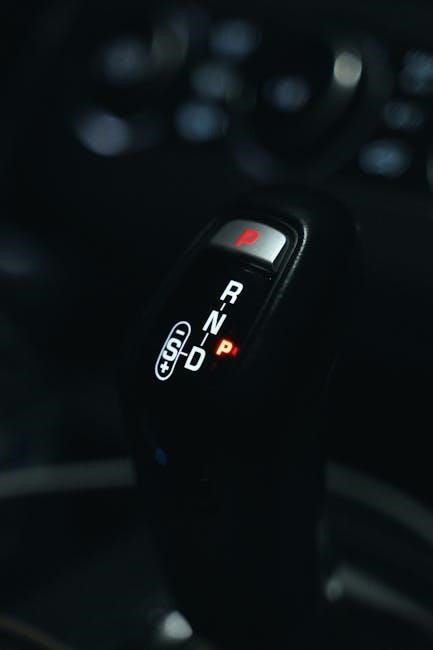Manual Transmission vs․ Paddle Shift: A Detailed Comparison
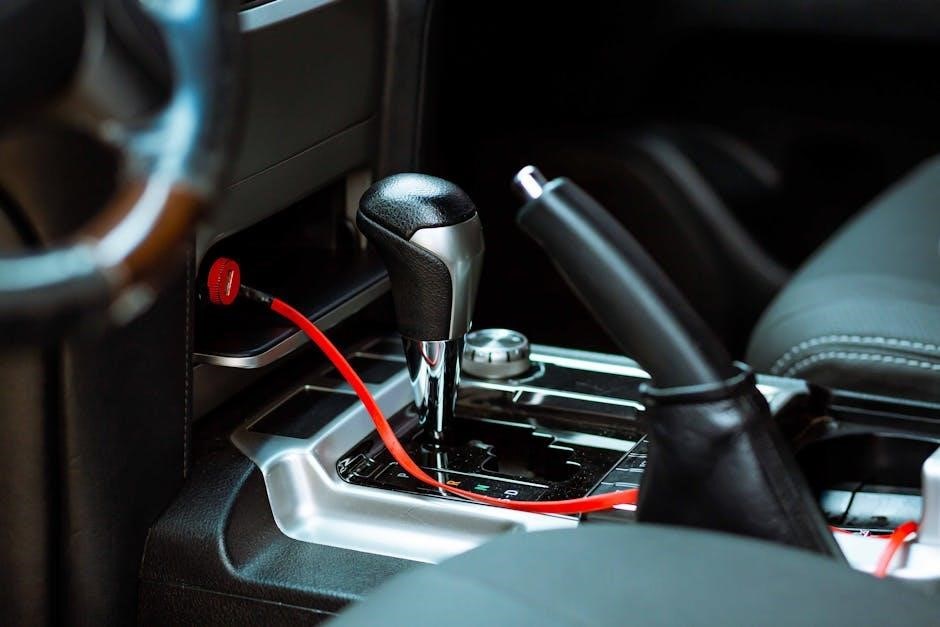
In the automotive world‚ the choice between manual and paddle shift transmissions reflects a balance between driver engagement and technological advancement․ Manual transmissions offer a direct‚ tactile connection‚ while paddle shifts provide quicker gear changes and ease of use․
The automotive landscape presents drivers with diverse transmission options‚ each offering a unique driving experience․ Among these‚ manual and paddle shift transmissions stand out‚ representing distinct approaches to gear selection and control․ Manual transmissions‚ the traditional choice‚ place the driver firmly in command‚ requiring physical engagement with a clutch and gear lever․ This setup fosters a strong sense of connection between driver and machine․
Paddle shift transmissions‚ on the other hand‚ embrace technology to offer a more streamlined experience․ Typically found in automatic or semi-automatic vehicles‚ paddle shifters allow drivers to manually select gears using paddles mounted on the steering wheel․ This system eliminates the need for a clutch pedal‚ simplifying the shifting process while still providing a degree of manual control․ Paddle shifters often boast quicker shift times compared to traditional manuals‚ enhancing performance․
The choice between these two transmission types often boils down to personal preference and driving style․ Manual transmissions appeal to enthusiasts who value the tactile feedback and precise control they offer․ Paddle shifts‚ however‚ cater to those seeking a blend of convenience and performance‚ particularly in high-performance vehicles where rapid gear changes are crucial․ Ultimately‚ understanding the nuances of each system empowers drivers to make informed decisions․
Manual Transmission: Mechanics and Operation
Manual transmissions‚ often lauded for their simplicity and directness‚ operate on a mechanical system that demands driver involvement․ At its core‚ a manual transmission relies on a clutch‚ a series of gears‚ and a gear selector to transfer power from the engine to the wheels․ The driver initiates gear changes by depressing the clutch pedal‚ which momentarily disconnects the engine from the transmission․
This disengagement allows the driver to select the desired gear using the gear lever‚ engaging a specific set of gears within the transmission․ Once the gear is selected‚ the driver gradually releases the clutch pedal‚ re-establishing the connection between the engine and the wheels․ The ratio of the selected gears determines the amount of torque delivered to the wheels‚ influencing acceleration and speed․
The operation of a manual transmission requires coordination and skill‚ as the driver must synchronize clutch engagement with throttle input to achieve smooth gear changes․ Mastering this technique provides a sense of control and engagement that many driving enthusiasts find rewarding․ While modern automatic transmissions have narrowed the performance gap‚ the direct connection and tactile feedback of a manual transmission remain appealing to those who prioritize driver involvement․
Paddle Shift Transmission: Technology and Functionality
Paddle shift transmissions represent a fusion of manual control and automatic convenience‚ employing electronic actuators to execute gear changes at the driver’s command․ Instead of a traditional gear lever and clutch pedal‚ paddle shifters are typically mounted on the steering wheel‚ allowing the driver to upshift or downshift with a simple flick of a finger․
Underneath the surface‚ paddle shift systems often utilize a semi-automatic gearbox‚ such as a dual-clutch transmission (DCT) or an automated manual transmission (AMT)․ These systems employ sophisticated electronics and hydraulics to engage and disengage clutches and shift gears with remarkable speed and precision․ When the driver activates a paddle‚ an electronic signal is sent to the transmission control unit (TCU)‚ which then commands the appropriate actuators to execute the gear change․
The TCU also manages throttle input and clutch modulation to ensure smooth and seamless transitions․ Paddle shift transmissions offer several advantages‚ including faster shift times‚ reduced driver fatigue‚ and the ability to keep both hands on the wheel during spirited driving․ While some purists may miss the direct mechanical connection of a traditional manual‚ paddle shifters provide a more accessible and user-friendly way to experience manual control․
Shift Speed and Performance: Manual vs․ Paddle Shift
When it comes to shift speed and overall performance‚ paddle shift transmissions often hold a distinct advantage over their manual counterparts․ Modern paddle shift systems‚ particularly those utilizing dual-clutch technology‚ can execute gear changes in milliseconds‚ far outpacing the capabilities of even the most skilled manual driver․ This lightning-fast shifting translates to quicker acceleration‚ improved lap times‚ and a more responsive driving experience․
In a manual transmission‚ the shift speed is limited by the driver’s ability to coordinate clutch engagement‚ throttle modulation‚ and gear lever movement․ Even with years of practice‚ a manual shift will typically take several hundred milliseconds to complete․ Furthermore‚ manual transmissions introduce the potential for human error‚ such as missed shifts or jerky transitions‚ which can negatively impact performance․
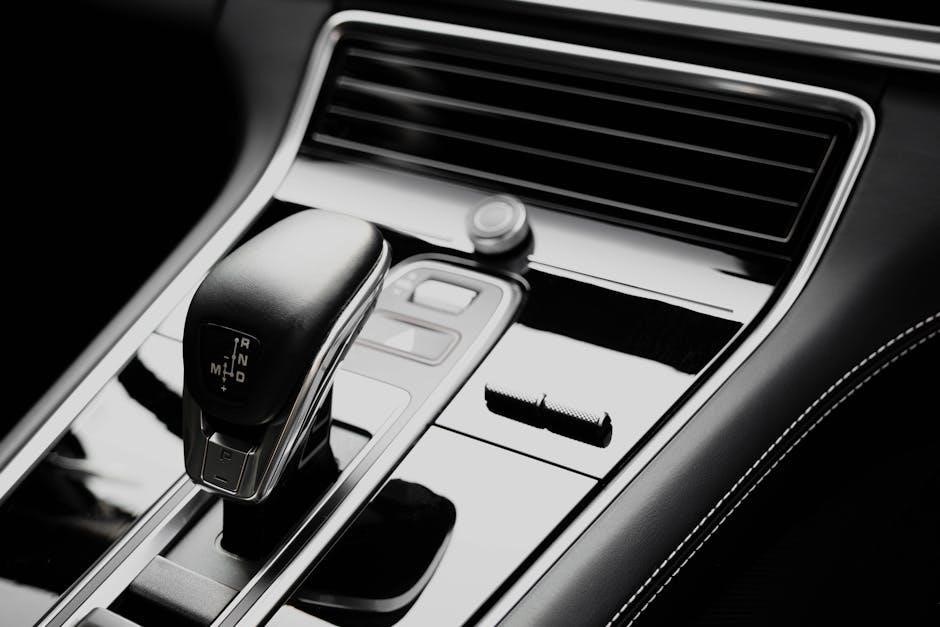
Paddle shift transmissions eliminate these limitations by automating the shifting process․ The electronic control system precisely manages clutch engagement and throttle input‚ ensuring smooth and consistent gear changes every time․ In performance driving scenarios‚ the speed and precision of paddle shifters can provide a significant competitive edge․ However‚ some drivers may argue that the increased speed comes at the expense of driver involvement and a less engaging experience․
Driver Engagement and Control: The Subjective Experience
The realm of driver engagement and control often leans heavily on subjective experiences‚ differing greatly between enthusiasts of manual and paddle shift transmissions․ For many‚ the manual transmission embodies a purer‚ more connected driving experience․ The act of physically engaging the clutch‚ selecting gears‚ and managing the engine’s power delivery creates a sense of direct involvement with the vehicle․ This tactile connection allows drivers to feel more in tune with the car’s behavior and respond intuitively to changing road conditions․
Paddle shift transmissions‚ while offering rapid gear changes‚ can sometimes feel more detached․ The electronic interface between the driver and the gearbox‚ while efficient‚ may lack the raw‚ visceral feedback that manual enthusiasts crave․ However‚ paddle shifters offer a different kind of control․ Drivers can quickly and precisely select gears without the need for a clutch pedal‚ freeing them to focus on steering and braking‚ particularly in high-performance situations․
Ultimately‚ the preferred level of driver engagement is a matter of personal preference․ Some drivers relish the challenge and satisfaction of mastering a manual transmission‚ while others appreciate the convenience and responsiveness of paddle shifters․ The choice depends on individual driving style‚ priorities‚ and the type of driving experience sought․
Fuel Efficiency: Comparing Manual and Paddle Shift
Fuel efficiency is a key consideration for many drivers‚ and the comparison between manual and paddle shift transmissions reveals a nuanced picture․ Historically‚ manual transmissions often held an advantage in fuel economy due to their simpler mechanical design and direct connection between the engine and wheels․ Skilled drivers could optimize gear selection for maximum efficiency‚ leading to lower fuel consumption․
However‚ advancements in paddle shift technology‚ particularly with the introduction of dual-clutch transmissions (DCTs)‚ have significantly narrowed this gap․ Modern paddle shift systems often incorporate sophisticated software that selects the most fuel-efficient gear automatically‚ even when the driver is using the paddle shifters․ These systems can also anticipate gear changes based on driving conditions‚ further optimizing fuel consumption․
In some cases‚ paddle shift transmissions can even surpass manual transmissions in fuel efficiency․ The speed and precision of gear changes‚ coupled with the ability to maintain optimal engine RPMs‚ can result in lower fuel consumption‚ especially in stop-and-go traffic․ Furthermore‚ the “automatic” mode in many paddle shift vehicles prioritizes fuel economy‚ shifting gears earlier and keeping the engine in its most efficient range․ Ultimately‚ the fuel efficiency of a manual versus paddle shift transmission depends on various factors‚ including driving habits‚ vehicle design‚ and the specific technology employed․
Maintenance and Reliability: A Long-Term Perspective
When considering the long-term ownership of a vehicle‚ maintenance and reliability are crucial factors․ Manual transmissions have traditionally been known for their robustness and relatively simple design‚ leading to lower maintenance costs․ The absence of complex electronics and hydraulic systems means fewer potential points of failure․ Regular maintenance typically involves fluid changes and occasional clutch replacements‚ tasks that are generally straightforward and cost-effective․
Paddle shift transmissions‚ particularly those with dual-clutch systems‚ present a different picture․ While offering superior performance and efficiency‚ they also tend to be more complex mechanically and electronically․ This complexity can translate to higher maintenance costs and a potentially greater risk of failure․ For example‚ dual-clutch transmissions often require specialized fluids and more frequent servicing intervals compared to manual transmissions․
Furthermore‚ the electronic components that control paddle shift systems can be susceptible to wear and tear‚ potentially leading to expensive repairs․ However‚ advancements in technology are continuously improving the reliability of paddle shift transmissions․ Many modern systems are designed with durability in mind‚ and regular maintenance‚ as recommended by the manufacturer‚ can help extend their lifespan․ Ultimately‚ the long-term reliability of both manual and paddle shift transmissions depends on factors such as driving habits‚ maintenance practices‚ and the specific design of the transmission․
Cost Considerations: Purchase and Upkeep
When weighing the options between a manual and a paddle shift transmission‚ cost plays a significant role‚ encompassing both the initial purchase price and the long-term upkeep expenses․ Generally‚ vehicles equipped with manual transmissions tend to have a lower initial cost compared to those with paddle shift or automatic transmissions․ This price difference stems from the simpler mechanical design of manual gearboxes‚ which translates to reduced manufacturing costs․
However‚ the upfront savings might not always equate to overall savings in the long run․ While manual transmissions typically require less frequent and less expensive maintenance‚ factors like clutch replacements can add up over time‚ especially for drivers who frequently engage in aggressive driving habits․ Paddle shift transmissions‚ on the other hand‚ often come with a higher purchase price due to their more complex engineering and advanced technology․
The upkeep costs for paddle shift systems can also be higher‚ as they may require specialized fluids‚ more frequent servicing‚ and potentially more expensive repairs should any electronic or mechanical components fail․ Furthermore‚ the cost of replacement parts for paddle shift transmissions can be considerably higher than those for manual transmissions․ Therefore‚ a careful assessment of both the initial purchase price and the projected long-term maintenance costs is essential when choosing between these two types of transmissions․
Paddle Shifters in Automatic Transmissions: A Hybrid Approach
Paddle shifters in automatic transmissions represent a fascinating hybrid approach‚ blending the convenience of an automatic gearbox with the driver-controlled gear selection reminiscent of a manual transmission․ This configuration offers drivers the best of both worlds‚ allowing them to cruise effortlessly in automatic mode while also providing the option to engage in more spirited driving by manually shifting gears using the paddles․
The system works by allowing the driver to override the automatic transmission’s computer-controlled shifting logic․ When the driver pulls a paddle‚ the transmission shifts up or down a gear‚ providing a more direct and engaging driving experience․ This is particularly useful in situations where the driver wants more control over the engine’s RPM‚ such as when approaching a corner on a winding road or when needing to quickly downshift for overtaking․
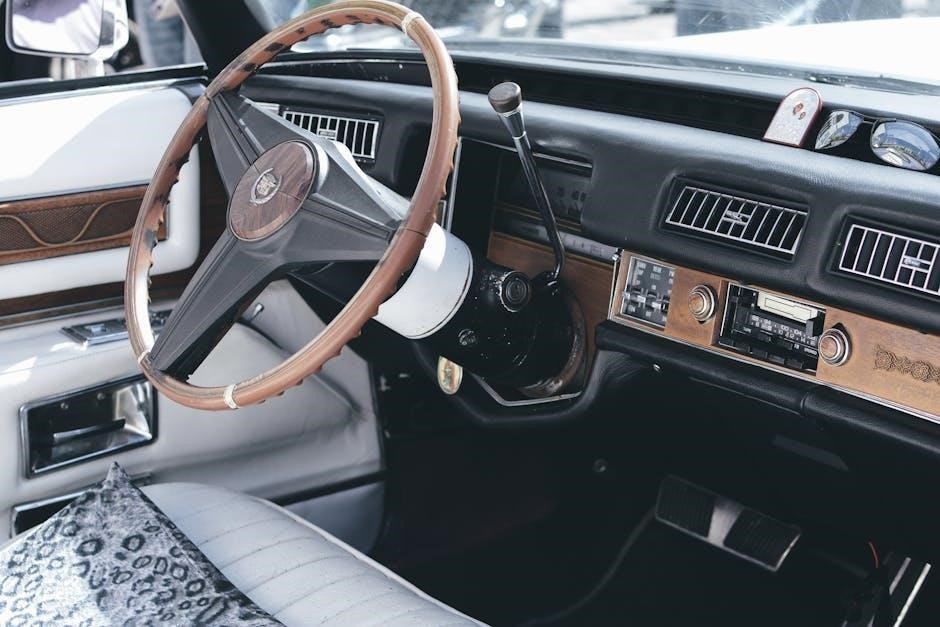
However‚ it’s important to note that paddle shifters in automatic transmissions do not offer the same level of control as a true manual transmission․ The automatic transmission still manages the clutch and prevents the driver from over-revving the engine‚ providing a safety net that is not present in a manual gearbox․ Despite this limitation‚ paddle shifters offer a significant improvement in driver engagement compared to a traditional automatic transmission‚ making them a popular choice for drivers who desire a more interactive driving experience without the full commitment of a manual transmission․
The Decline of Manual Transmissions: Market Trends
The automotive market has witnessed a significant decline in the popularity of manual transmissions over the past few decades․ Several factors contribute to this trend‚ including advancements in automatic transmission technology‚ changing driver preferences‚ and the increasing complexity of modern vehicles․ Automatic transmissions‚ particularly those equipped with paddle shifters‚ now offer comparable or even superior performance to manual gearboxes in terms of shift speed and fuel efficiency․
Furthermore‚ the rise of autonomous driving features and driver-assistance systems has further diminished the appeal of manual transmissions․ These technologies are often incompatible with manual gearboxes‚ as they require precise and automated control over the vehicle’s powertrain․ As a result‚ manufacturers are increasingly prioritizing automatic transmissions in their vehicle lineups‚ leading to a shrinking market share for manual options․
Driver preferences have also shifted towards greater convenience and ease of use․ Many drivers find manual transmissions to be more demanding and less enjoyable to operate‚ especially in congested urban environments․ The availability of paddle shifters in automatic transmissions offers a compromise‚ providing drivers with a degree of manual control without the need for a clutch pedal․ This hybrid approach has further accelerated the decline of traditional manual gearboxes‚ as it caters to a wider range of drivers who seek a balance between performance and convenience․
Paddle Shift Advantages in Performance Driving (Racing‚ Autocross)
In the realm of performance driving‚ particularly in racing and autocross events‚ paddle shift transmissions offer distinct advantages over traditional manual gearboxes․ The primary benefit lies in the speed and precision of gear changes․ Paddle shifters enable drivers to execute near-instantaneous shifts‚ minimizing the interruption of power delivery and maintaining momentum through corners․ This rapid shifting capability translates to faster lap times and improved overall performance․
Moreover‚ paddle shift systems allow drivers to keep both hands on the steering wheel at all times‚ enhancing control and stability during high-speed maneuvers․ This is particularly crucial in demanding racing environments where split-second decisions and precise steering inputs are essential․ The ability to shift gears without removing a hand from the wheel provides a significant advantage in terms of driver focus and vehicle control․
Furthermore‚ advanced paddle shift transmissions often incorporate sophisticated electronic control systems that optimize shift timing and smoothness․ These systems can anticipate driver inputs and pre-select gears‚ further reducing shift times and improving the overall driving experience․ In contrast‚ manual transmissions require drivers to manually coordinate clutch engagement and gear selection‚ which can be more challenging and time-consuming‚ especially under the intense pressure of competitive driving․ The combination of speed‚ precision‚ and enhanced control makes paddle shift transmissions the preferred choice for many performance drivers․
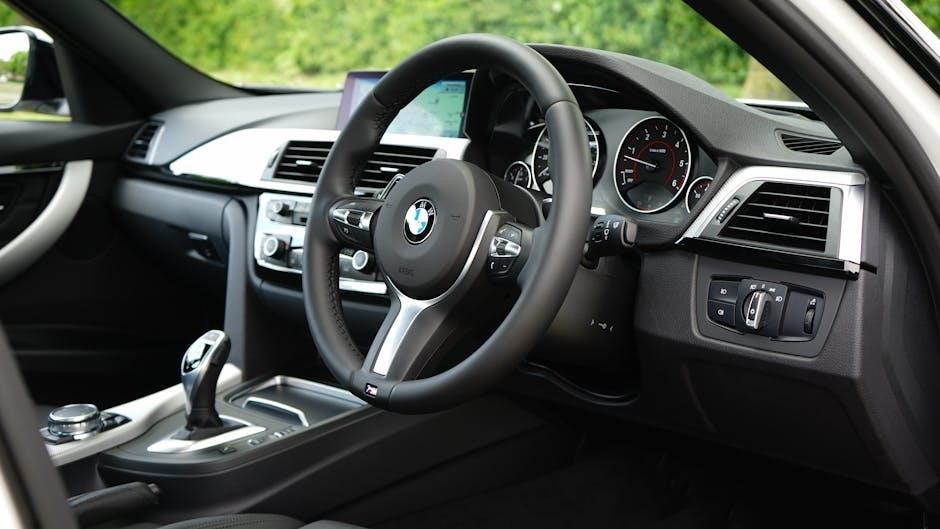
Ultimately‚ the choice between a manual transmission and a paddle shift system hinges on individual needs and preferences․ For drivers who prioritize a direct‚ engaging connection with their vehicle and enjoy the tactile experience of shifting gears‚ a manual transmission remains a compelling option․ The manual gearbox offers a sense of control and involvement that can enhance the driving experience‚ particularly for enthusiasts who value the art of mastering the clutch and gear lever․
Conversely‚ paddle shift transmissions cater to drivers who prioritize performance‚ convenience‚ and ease of use․ The rapid gear changes and seamless operation of paddle shifters make them well-suited for both daily driving and spirited performance scenarios․ The ability to keep both hands on the wheel while shifting enhances control and safety‚ while the automated features of some paddle shift systems can simplify the driving experience in stop-and-go traffic․
Consider your driving style‚ typical driving conditions‚ and personal preferences when making your decision․ If you crave a raw‚ visceral driving experience and don’t mind sacrificing some convenience‚ a manual transmission may be the perfect fit․ However‚ if you value performance‚ ease of use‚ and advanced technology‚ a paddle shift transmission is likely the better choice․ Evaluate what aspects of the driving experience are most important to you‚ and choose the transmission that best aligns with your individual needs․
